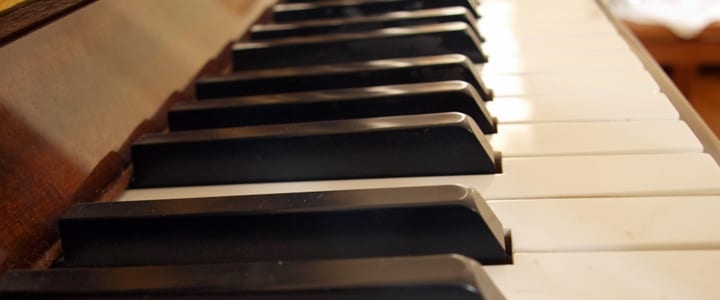Modal music is interesting for several reasons: First, it gives us a glimpse into the past of the scale development, but also shows how basic harmonic construct has taken place and shape over the period of several centuries.
The modal scale that I am going to use in this example is a Dorian scale. For those who are not familiar with modes, it is essentially a natural D minor that contains B instead of B flat, which changes the placement of whole and half steps (which indeed determines the character of any given scale).
To get into the modal “mood,” first play the natural D minor scale several times, up and down. Now, play the same scale using B instead B flat. You will notice how the mood of the scale has changed and that the upper tetrachord has attained some brightness and optimism. You have to allow your ears to get used to this new tonal experience. Play the scale a few more times. If you need a little more guidance getting into the Dorian scale, there are great guides online for guitar, piano, and other instruments.
Harmonizing the Scale
Harmonizing the scale should be as straightforward as possible while avoiding the tritone F – B or its inversion.
Here are several ways of harmonizing the tones of the scale using triads :
D E F G A B C D
Dm Em F G Am Em C Dm
Dm Am Dm Em Am Em Am Dm
Dm C F Em Am G C Dm
Note: Chords other than triads can be used (for example, major and minor 7 th), however in order to properly understand the modal principle, the simple triads should be used at this stage.
The chord B-D-F or any inversion of the same should be avoided because its presence could easily pull us into C major.
The absence of tensions and resolutions found in major scales (I-IV-V-V) makes modal music softer and more abstract. The Dorian 6th (D-B) allows us to construct the very powerful two chord progression Dm–G. Resolution should not follow into C because the progression Dm-G-C presents a “turnaround” or dominant cadence that confirms the key of C. Instead, it is better to aim for the minor key that will ensure the tonal ambiguity. Sometimes the tonal ambiguity can be preserved and enhanced by using only the root and the fifth instead the whole chord.
Here we’re not bound by classical harmony rules, and some degree of experimentation is necessary to attain satisfactory results. However, care should be exercised in voice leading, especially in a four-part harmony layout: no unnecessary leaps and no intervals larger than octave. Tritone should be avoided for now, although it is possible to use it under certain circumstances and still retain the modal feel.
The Treatment of Passing and Sustained Tones
Passing tones (in relation to main chords) should create acceptable dissonances that can easily be resolved into the third or fifth of the next chord. Typical sustained tones such as sus2 and sus4 should be properly resolved into nearest consonance (usually on the way down). Lastly, remember that melody should be developed in a predetermined manner that ensures fluency and modal integrity.
 Peter B. teaches piano, violin, and music theory lessons in Stratford, CT. He specializes in teaching classical and jazz styles as well as advanced music theory. Peter has been teaching for over 20 years and he joined the TakeLessons team in August 2012. Learn more about Peter here!
Peter B. teaches piano, violin, and music theory lessons in Stratford, CT. He specializes in teaching classical and jazz styles as well as advanced music theory. Peter has been teaching for over 20 years and he joined the TakeLessons team in August 2012. Learn more about Peter here!
Photo by Nick Koutoulas
Suzy S.

